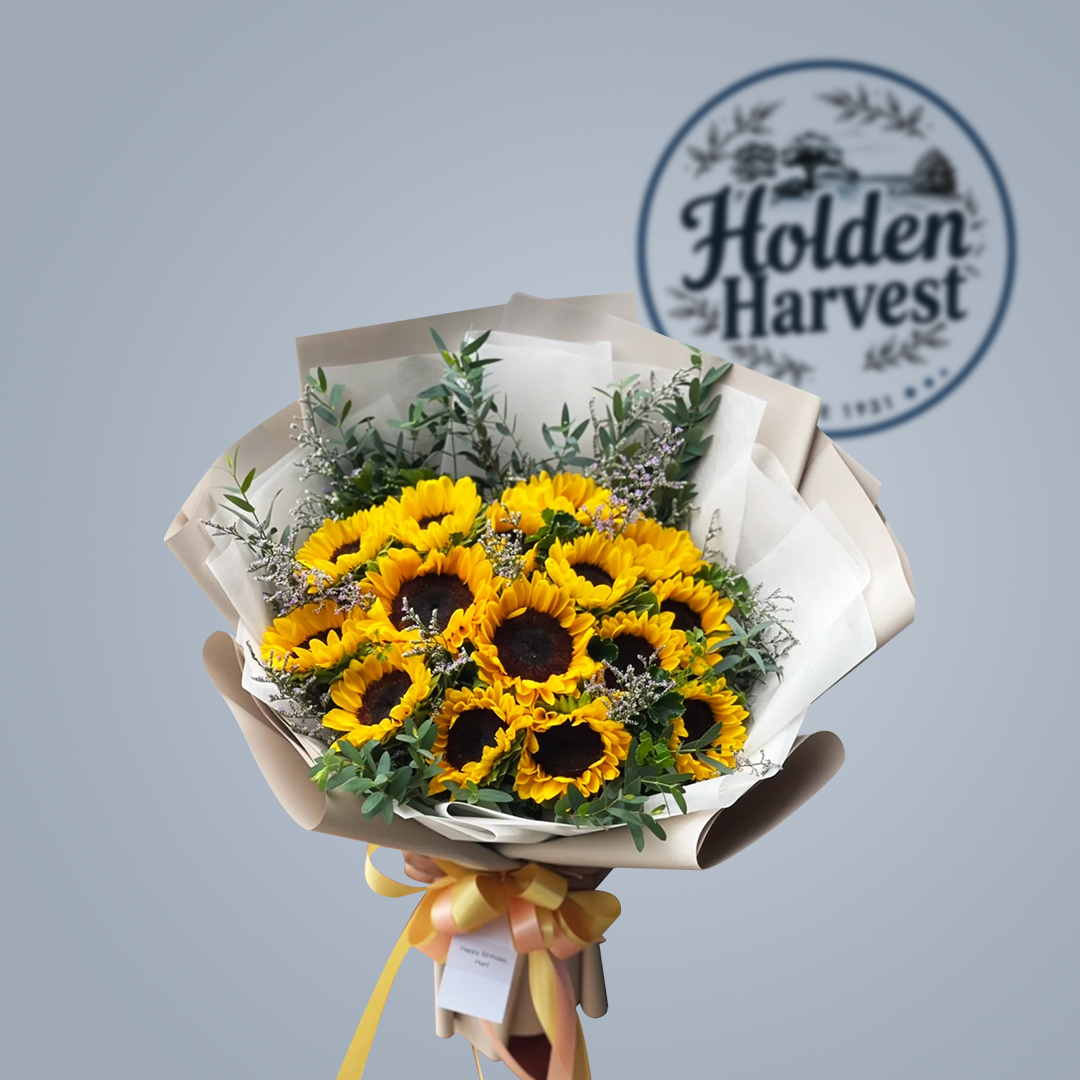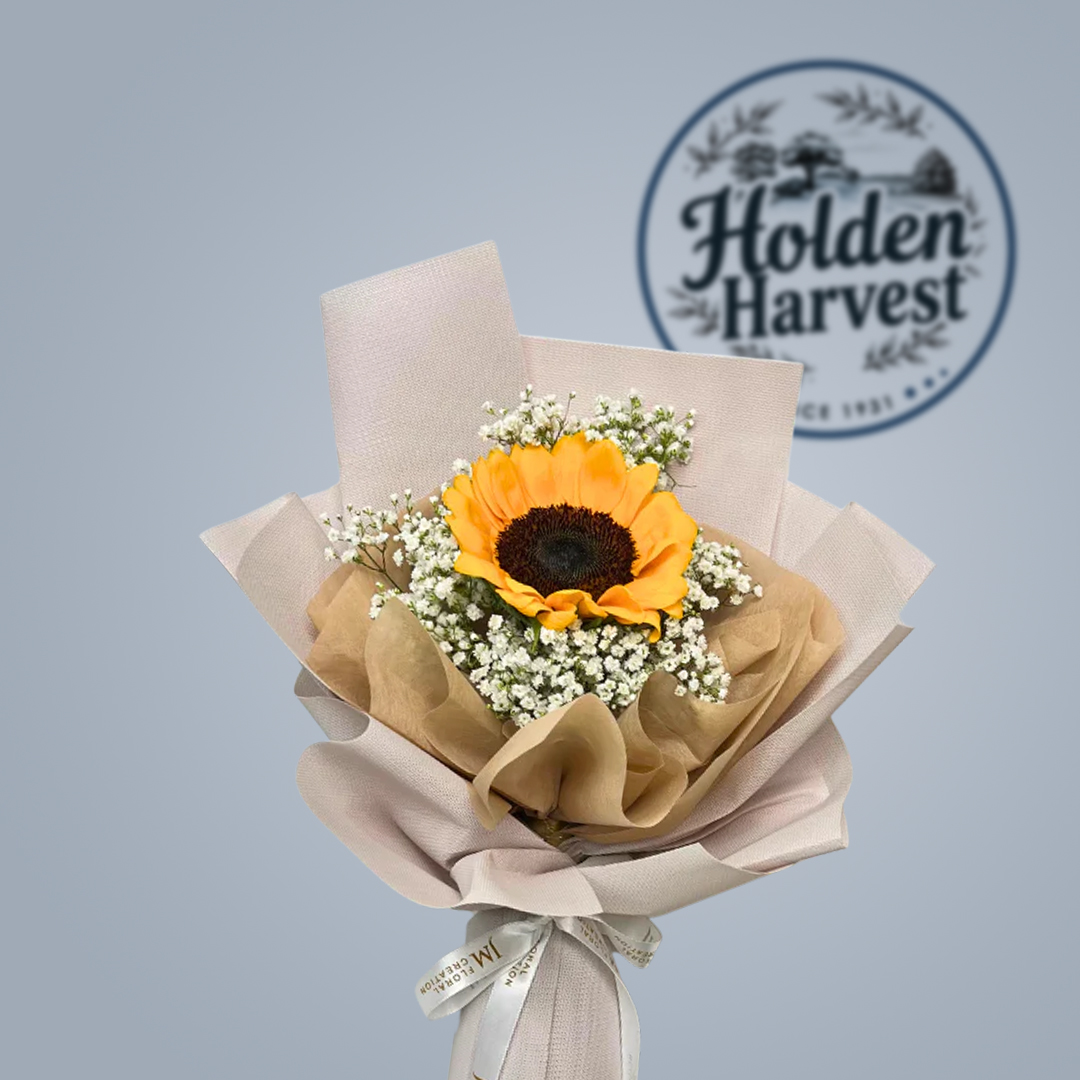Sunflowers, with their vibrant yellow petals and towering stems, symbolize happiness and positivity. Their large, sunny blooms turn toward the sun, making them a cheerful addition to gardens and bouquets.
Types of Sunflowers:
Sunflowers stand out from other flowers due to their large, bold appearance and the fascinating way they follow the sun throughout the day. This unique characteristic is called heliotropism, where the flower’s head rotates to face the sun. Their ability to reflect sunlight and warmth gives them a symbol of positivity, happiness, and optimism.

Sunflowers are easy to identify with their vibrant, round petals, resembling the sun itself. The flower head can vary in size, and their colors often range from classic yellows to oranges and even red. Whether they are brightening up a garden or standing tall in a field, sunflowers are an unmistakable symbol of summer.
There are several types of sunflowers, each offering unique characteristics. Here are a few:
Sunflowers have long been associated with happiness, positivity, and warmth. They are symbols of hope and resilience, always seeking the light, no matter how dark the surroundings may seem. Their sunny disposition has made them a favorite flower in many cultures, representing the bright side of life.
In various cultures, sunflowers symbolize good luck and success. Their blooming season coincides with summer, a time when people feel more energized and optimistic. They remind us to stay positive and look for the light even when things seem difficult.
Throughout history, sunflowers have been admired not just for their beauty but also for their meaning. Artists like Vincent van Gogh have immortalized them in paintings, and they often appear in literature and festivals as symbols of joy, vitality, and renewal.
Growing sunflowers is relatively easy, and their robust nature makes them suitable for a variety of climates.
Sunflowers thrive in areas with plenty of sunlight. They need at least 6 to 8 hours of direct sunlight each day. They also prefer well-draining soil, ideally with a slightly acidic pH. Whether you’re planting giant sunflowers or dwarf varieties, make sure the soil is loose and rich in nutrients.
The best time to plant sunflowers is in the spring when the danger of frost has passed. Plant sunflower seeds about 1 to 2 inches deep, with about 6 inches of space between each seed to give them room to grow. For giant sunflowers, plant them further apart, as they need more space to spread their large leaves and blossoms.

Whether you’re planting them in your garden, using them as decor, or enjoying them in a bouquet, sunflowers continue to charm and brighten the world. Their versatility, vibrant color, and deep symbolism ensure they remain a favorite for people all around the globe. Sunflowers are more than just flowers—they are a reminder to always look toward the light.
1. How tall do giant sunflowers grow?
Giant sunflowers can grow to over 12 feet tall, with some varieties reaching up to 14 feet.
2. Can I grow dwarf sunflowers in a small garden?
Yes, dwarf sunflowers are perfect for small spaces and container gardens as they grow only 1 to 3 feet tall.
3. When is the best time to plant sunflowers?
Sunflowers should be planted in the spring after the last frost, allowing them to grow during the warm summer months.